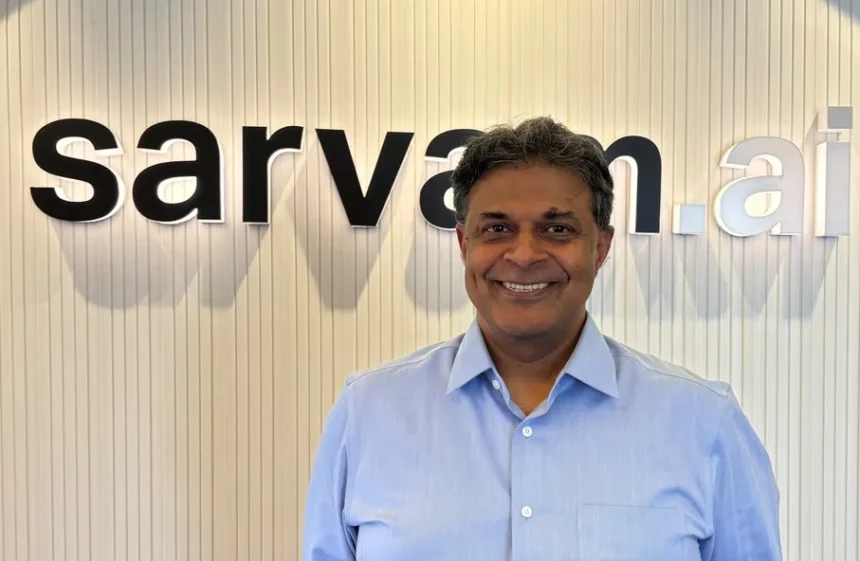India’s ambition to create a sovereign large language model (LLM) has been set in motion with the appointment of Bengaluru-based AI startup Sarvam. The Indian government’s partnership with Sarvam aims to create an indigenous AI model tailored to the needs of the country, taking inspiration from successful models like ChatGPT and DeepSeek. The initiative, requiring collaboration between academia, the government, and the IT sector, marks a bold leap toward India’s self-reliance in AI technology.
The Vision Behind Sarvam’s LLM
The mission to build India’s first sovereign LLM reflects the country’s drive to reduce dependency on foreign AI technology. This large language model will be tailored for India’s diverse linguistic landscape and will support multiple applications across urban and rural sectors, from agriculture and weather forecasting to city administration. Sarvam’s goal is to combine the processing power of systems like Nvidia-enabled ChatGPT with the nimbleness of models like DeepSeek.
Six Steps to Building India’s Sovereign LLM
The journey to creating a foundational LLM for India is intricate and will involve several critical steps:
- Developing the architecture: Sarvam’s LLM will use a transformer-based architecture optimized for natural language processing, supporting vast applications across various sectors.
- Data collection and processing: India has a rich repository of data, from ancient manuscripts to modern digital sources. Careful data curation, including eliminating redundancies and noise, will be necessary for the LLM’s training.
- Fine-tuning for vertical domains: The LLM will be customized for specific industries like agriculture, weather forecasting, and urban governance to ensure efficient outcomes across different regions.
- Training the LLM: Comprehensive training will be crucial, requiring significant computational power and energy. The LLM will need to update continually, ensuring its predictions evolve with the latest information.
- Preparing the user community: Success depends not only on technology but on user adoption. Designing adaptive learning systems for diverse users will ensure the LLM is accessible and useful to all demographics.
- Deploying the model: After extensive testing, Sarvam will deploy the LLM in real-world applications, ensuring it delivers accurate, context-driven responses with minimal errors.
The Role of Government and Industry Partners
The Indian government has pledged support by providing computing resources and partnering with GPU-as-a-service providers, ensuring that no shortcuts are taken in this ambitious project. Collaboration with prestigious institutions like IIT Madras will provide the necessary research and development backing to Sarvam’s initiative, bringing together local talent and global expertise to build a world-class AI system.
Challenges and Opportunities for India’s AI Future
India’s entry into the global AI race comes with challenges. Countries like the US and China currently lead in AI development, but India’s unique linguistic and cultural diversity offers significant opportunities to develop tailored AI solutions. The Sarvam LLM project aims to meet India’s specific needs, creating an AI system that works for its people across different sectors.
The government has shown great sagacity in offering to provide computing resources and has simultaneously partnered with graphics processing unit-as-a-service providers to ensure that no shortcuts are taken, as that might bring the output and outcomes from the LLM into question. The partnership with Indian Institute of Technology Madras should also provide the founders of Sarvam access to the deep research that will back the foray into new areas of knowledge and wisdom. The use of local resources and a new cohort of high-calibre youth should enable a new generation of product and platform builders, with opportunities to participate in a revolution in the making.
It would be too ambitious, indeed preposterous, for us to believe we are launching an initiative that will place us in the lead of the global AI race. The US and China have an enormous advantage over us in AI and we will do well to build comparable LLMs that can serve India’s purposes well before we set our eyes on global success. We should ensure that the wisdom that is embedded in the $300-billion Indian IT industry and successful associations like Indian Software Products Industry Round Table and National Association of Software and Service Companies is harnessed, when needed. This should be done without inhibiting the entrepreneurial spirit of young Indians with aspirations for a truly Viksit Bharat. This new mission can attain success beyond our imagination.
Conclusion: A New Dawn for AI in India
While it may be ambitious to think that India will lead the global AI race in the immediate future, the Sarvam project represents a critical step toward creating a self-sufficient AI infrastructure. This endeavor could not only transform the Indian AI landscape but also provide a model for other countries looking to develop sovereign AI solutions. By focusing on local data, innovation, and collaboration, India’s sovereign LLM initiative may well lay the foundation for an AI-powered future in the country.
For more updates on Sarvam and India’s AI progress, stay tuned to our upcoming articles.


